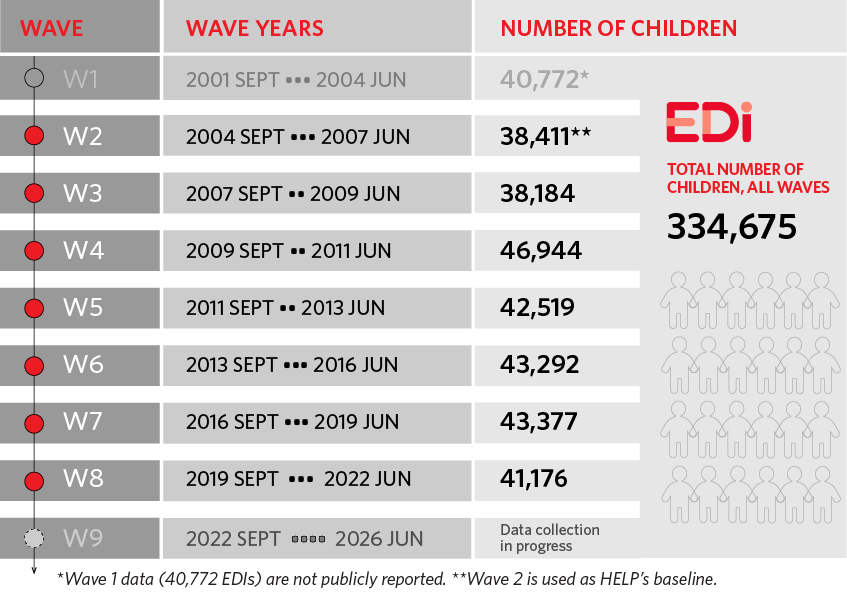The Early Development Instrument (EDI) data provide insights about the whole child, including their physical, emotional, social, and cognitive development in kindergarten, and how children’s developmental health changes over time and across the province.
The EDI was the first questionnaire implemented by the Human Early Learning Partnership. All BC school districts and some independent and First Nations schools have participated in EDI data collection over the last two decades.
The EDI Data Dashboard is an online interactive tool for exploring trends in EDI data from the first publicly reported wave of data (Wave 2, data collected 2004–2007), to the most recent (Wave 8, collected 2019–2022). EDI data are collected on a “wave” schedule, spanning 2-4 years, to ensure sufficient data are gathered in all school districts involved. The data reported through the Dashboard are based on children’s home postal codes and include kindergarten children who live within the boundary type selected. See the chart on the right for a breakdown of EDI waves and years of data collection.
For an overview of the EDI as well as detailed information of how to interpret EDI data on the Dashboard, view:
Click the "Explained" information icon found throughout the dashboard for more information on modules, data, charts, and tables.
Click the "Download" icon to download individual charts or an entire module as a .PNG for use in presentations and reports.
